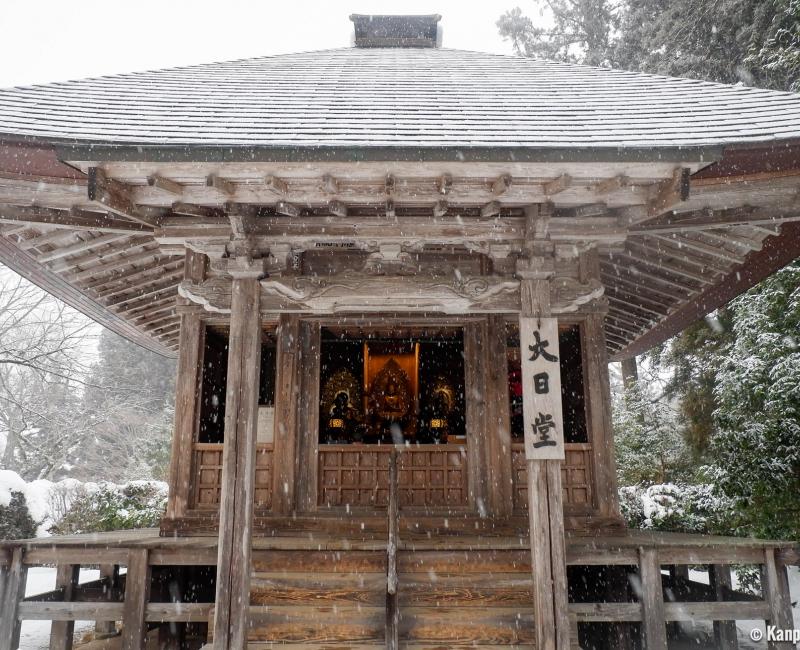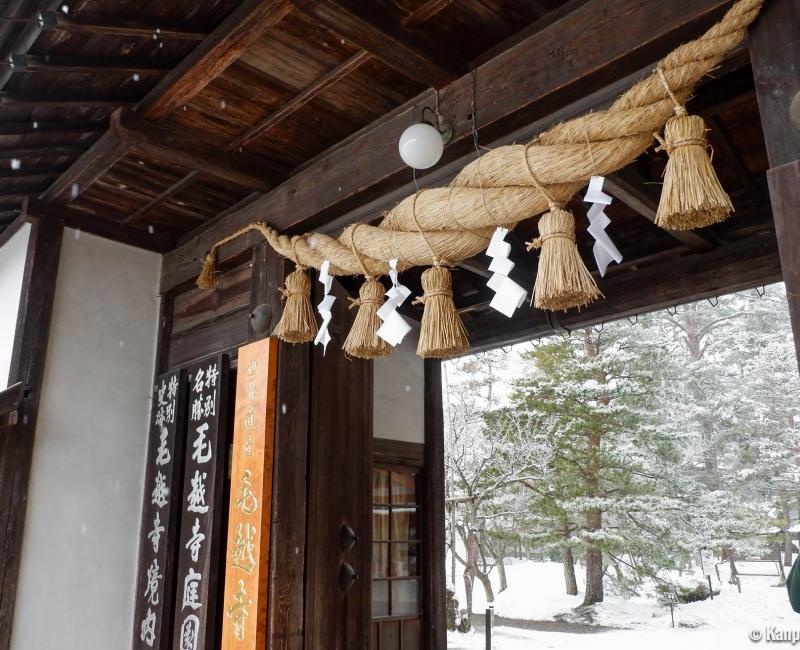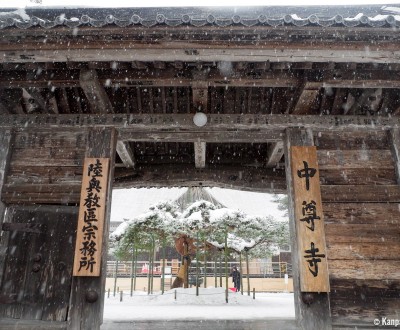Chuson-ji and Motsu-ji
The World Heritage Temples in Hiraizumi
Chuson-ji and Motsu-ji, two temples of the Buddhism Tendai school, are located in Hiraizumi in Iwate Prefecture. They were named UNESCO World Heritage sites in 2011. Chuson-ji shelters wonderful gilded Buddha statues, and Motsu-ji houses one of the most important Japanese gardens from the Heian period (794–1185).
A flourishing city when Kyoto was the capital of Japan, Hiraizumi collapsed when Minamoto no Yoritomo came to power as the first shogun of Japan in the 12th century. Hiraizumi has since built on its wealthy past and, over time, has become one of the main tourist attractions of the Tohoku area.

Chuson-ji
Dating from the beginning of the 12th century, Chuson-ji is said to be the first temple of Tendai Buddhism in northern Japan. According to the Tendai school’s archives, Chuson-ji may have been built as early as the 9th century. However, history books have registered it as being built three centuries later by the Fujiwara clan. At the time, the monastery contained as many as forty buildings, and more than three hundred monks lived there.
Nowadays, only a few pavilions have been preserved, but they still wonderfully attest to Chuson-ji’s golden age.
The monastery’s pavilions are dispersed in the woods and can be discovered on a pleasant hike in the forest. The most interesting building is Konjikido, also named "Hiraizumi’s Golden Pavilion." This little wooden building is covered entirely with gold leaves, and it shelters 21 gilded Buddha statues. In the center, Amida Nyorai, the Buddha reigning over the Pure Land, is surrounded by two guardians and six Jizo, protectors of children and travelers. There is also a statue of Seishi, the bodhisattva of wisdom, and one of Kannon, the bodhisattva of compassion. The ornamentation of Konjikido is really impressive, from the quantity of gold to the detailed representations of the deities. The building was restored in 1964 by Shogyo Oba, one of the greatest Japanese lacquer masters. Visitors will not fail to be impressed by Konjikido, but taking pictures of it is prohibited.
The Sankozo Museum preserves more than 3,000 National Treasures and Important Cultural Properties, such as Buddhist sutras, statues, and objects formerly belonging to the Fujiwara family. Very few explanations are in English, so tourists are advised to visit the museum with an audio guide to fully enjoy its history and culture.

Motsu-ji
Located only 1 kilometer west of the closest JR station, Motsu-ji is interesting for its outdoor settings. Also built in the 12th century, most of its temple buildings have burned down and were never reconstructed. However, the remnants of one of the most accomplished Japanese gardens of the Heian period can still be seen.
The garden was designed to represent the paradise of the Pure Land. Many natural elements, such as a pond, a river, rocks and mountains in the background, still form a harmonious landscape. Unfortunately, the bridge over the river doesn’t exist anymore.
A few nice pavilions can be seen when walking around the main pond. Moreover, traces of the foundations of the destroyed buildings still exist and allow visitors to understand how vast the precincts of the temple were, thus how influential it was.
One might be disappointed when visiting Motsu-ji in winter, as quite a thick layer of snow may hide the details of the garden and the traces of the ancient pavilions. Throughout the year, several events are held that allow discovery of the site. The New Year is celebrated with the suspension of lanterns 🏮 at the entrance of the main building, providing a charming and mystical atmosphere at night amid the snowy landscape. Then, during Golden Week (from the end of April to the beginning of May), people dressed up in period costumes replay historical scenes, in the same manner as at Kyoto’s Aoi Matsuri. Finally, in summer, the temples’ lawns turn violet thanks to irises blooming from the end of June to the beginning of July.

